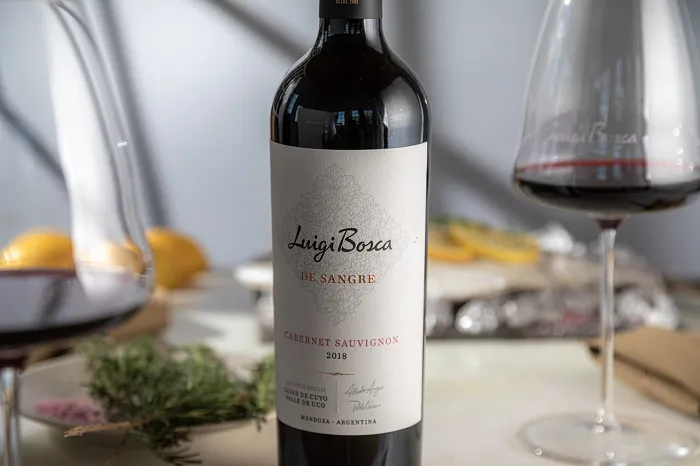Cabernet Sauvignon is one of the most popular and recognizable red wines in the world. Its deep flavor, bold structure, and ability to age gracefully make it a staple for wine enthusiasts and a must-try for beginners. Learning how to drink Cabernet Sauvignon isn’t just about pouring it into a glass—it involves understanding its characteristics, knowing how to serve it, and appreciating the nuances in taste and aroma.
This guide is designed for those who are new to Cabernet Sauvignon Wine. Whether you’re preparing for your first tasting or simply want to enhance your wine knowledge, this comprehensive resource will walk you through the essentials. We’ll cover the background of the grape, the proper way to serve and taste it, ideal food pairings, how to read labels, and how to store it correctly. We’ll also explore its calorie content and different types available in the market today.
What is Cabernet Sauvignon?
Cabernet Sauvignon is a red grape variety that originated in the Bordeaux region of France. It is now cultivated globally, from California’s Napa Valley to Chile, Australia, South Africa, and beyond. The grape is known for producing full-bodied wines with high tannins, moderate acidity, and deep flavors of blackcurrant, blackberry, cedar, and sometimes green bell pepper.
Over the centuries, Cabernet Sauvignon has become the benchmark for premium red wines. The grape’s thick skin contributes to its robust tannin structure, allowing it to age well. Winemakers prize its versatility, allowing it to be blended or enjoyed as a single-varietal wine.
How to Serve Cabernet Sauvignon
Serving Cabernet Sauvignon properly enhances the overall experience. The right temperature, glassware, and decanting time make a noticeable difference in taste and aroma.
Temperature: Serve Cabernet Sauvignon slightly below room temperature, ideally between 60–65°F (15–18°C).
Glassware: Use a large, wide-bowled red wine glass to allow the aromas to develop and to maximize surface contact with air.
Decanting: Young Cabernets benefit greatly from decanting for 30–60 minutes to soften tannins and enhance bouquet. Older bottles may need less time.
How to Taste Cabernet Sauvignon
Tasting Cabernet Sauvignon involves using all your senses. Begin by observing the color—it should be deep ruby to garnet. Swirl the wine gently and note the “legs” or tears on the glass, which indicate alcohol content and body.
Smell the wine. Aromas may include blackcurrant, plum, blackberry, spice, tobacco, leather, and oak. Then take a small sip and let the wine coat your palate. Assess the body, acidity, tannin level, and finish. The Cabernet Sauvignon Wine Taste is typically bold, rich, and layered with complex notes that evolve as the wine breathes.
Food Pairing with Cabernet Sauvignon
Cabernet Sauvignon is a food-friendly wine that pairs best with rich, savory dishes. Its high tannins and acidity make it ideal for red meats, aged cheeses, and roasted vegetables.
Grilled steak or lamb
Beef short ribs or brisket
Hard cheeses like aged cheddar or gouda
Mushroom risotto
Understanding Cabernet Sauvignon Labels
Reading wine labels can be intimidating, but knowing a few key elements helps you select the right bottle. Labels typically include:
Producer: The winery or vineyard that made the wine
Vintage: The year the grapes were harvested
Region: Where the wine was produced
Alcohol content: Usually 13.5% to 15%
Some labels may also indicate if the wine is “Reserve” or “Estate Bottled,” which often implies higher quality or stricter production methods.
Storing Cabernet Sauvignon
Proper storage ensures your wine remains in excellent condition. Store unopened bottles horizontally in a cool, dark place with a consistent temperature of about 55°F (13°C). Humidity should be around 70% to keep the cork from drying out.
Once opened, Cabernet Sauvignon can last up to 3–5 days if re-corked and refrigerated. Consider investing in a wine preservation system if you open bottles frequently.
Caloric Content of Cabernet Sauvignon
If you’re watching your intake, it’s helpful to know that Cabernet Sauvignon typically contains about 120–130 calories per 5 oz serving. Factors like alcohol content and residual sugar can slightly alter this.
Types of Cabernet Sauvignon
Cabernet Sauvignon comes in several styles, depending on the region and winemaker’s techniques. Common Cabernet Sauvignon Wine Types include:
New World Cabernet: Fruit-forward with higher alcohol and oak influence (e.g., California, Australia)
Old World Cabernet: More earthy, subtle, and acidic (e.g., Bordeaux)
Blends: Frequently blended with Merlot, Cabernet Franc, or Syrah for added complexity
Common Mistakes When Drinking Cabernet Sauvignon
Here are a few pitfalls to avoid:
Serving too warm or too cold
Not decanting young wines
Pairing with overly light dishes
Using small or narrow glasses
Being mindful of these factors will enhance your tasting experience significantly.
Building a Cabernet Sauvignon Collection
If you’re ready to delve deeper, building a personal wine collection is a rewarding step. Start with a few bottles from various regions and vintages. Keep tasting notes and track how flavors evolve over time. Include a mix of early-drinking wines and bottles meant for aging.
Join wine clubs, attend tastings, and engage with communities online or in-person to deepen your knowledge. The journey is just as enriching as the wine itself.
Conclusion
Drinking Cabernet Sauvignon is more than sipping wine—it’s about savoring a tradition that spans centuries. By understanding how to serve, taste, and pair it properly, you can transform your wine experiences from casual to connoisseur-level. Whether you’re enjoying a glass with dinner or exploring a cellar selection, Cabernet Sauvignon invites you to slow down, taste deeply, and appreciate the craftsmanship in every bottle.
You Might Be Interested In:


